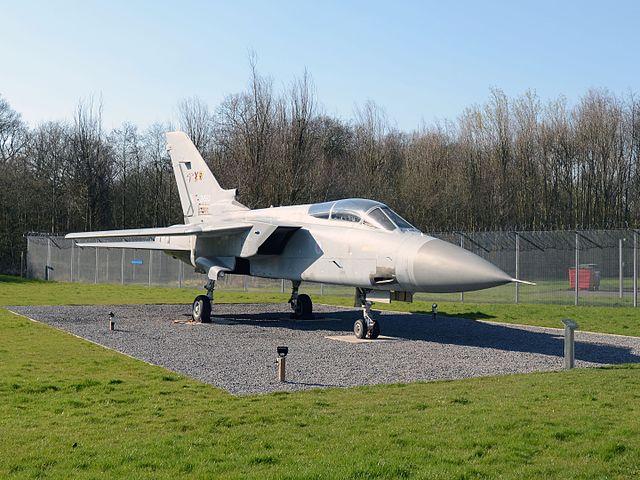Number 100 Squadron is a former Royal Air Force squadron. It last operated the British Aerospace Hawk T1, providing 'aggressor' aircraft for air combat training from RAF Leeming in North Yorkshire, UK.
Vickers Vildebeest Mark III torpedo bombers of 100 Squadron approaching Tavoy, Burma. 11 February 1939
100 Squadron Hawk over Yorkshire, the flag can be seen below the cockpit.
A 100 Squadron Hawk T1 in 2006
Royal Air Force Leeming or more simply RAF Leeming is a Royal Air Force station located near Leeming, North Yorkshire, England. It was opened in 1940 and was jointly used by the RAF and the Royal Canadian Air Force (RCAF). Between 1950 and 1991, it operated mostly as a training base with Quick Reaction Force (QRF) Panavia Tornado F3 fighters based there in the latter stages of the Cold War and into the early 21st century. Since 2006, it has become the home of the deployable RAF communications cadre and the home of No. 135 Expeditionary Air Wing.
An RAF C-17 above the runway at RAF Leeming
This Stirling, N3641/MG-D, seen being prepared for a flight, was the second Stirling to be delivered to No. 7 Squadron at Leeming and took part in their first raid over Rotterdam on the night of 10–11 February 1941.
A Tornado F3 aircraft now stands as a gate guardian outside the main gate of RAF Leeming






